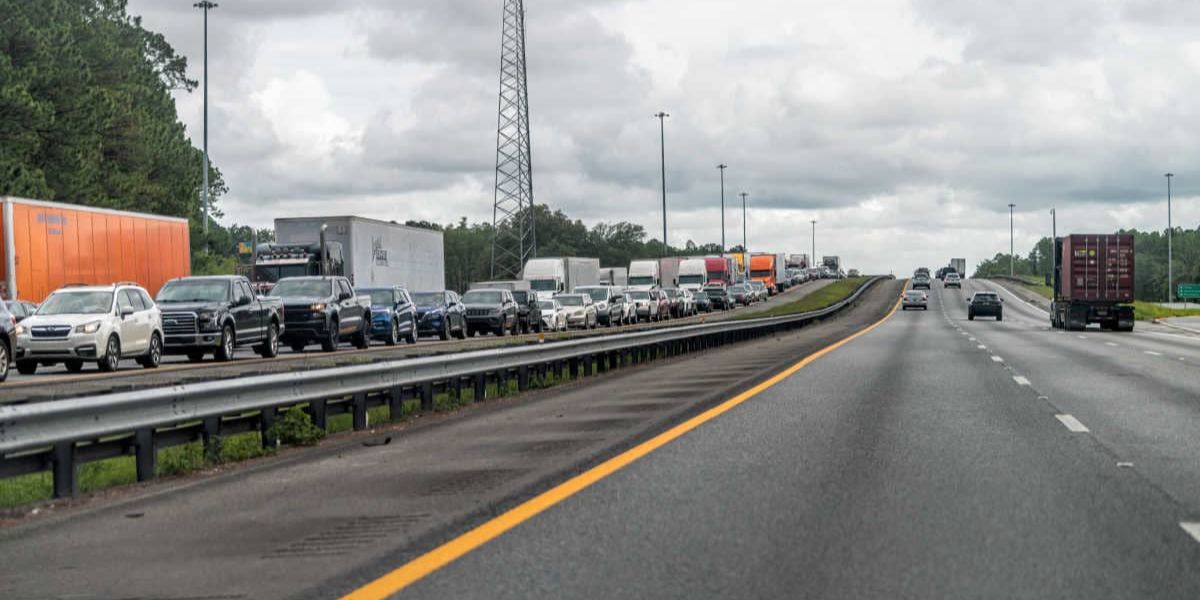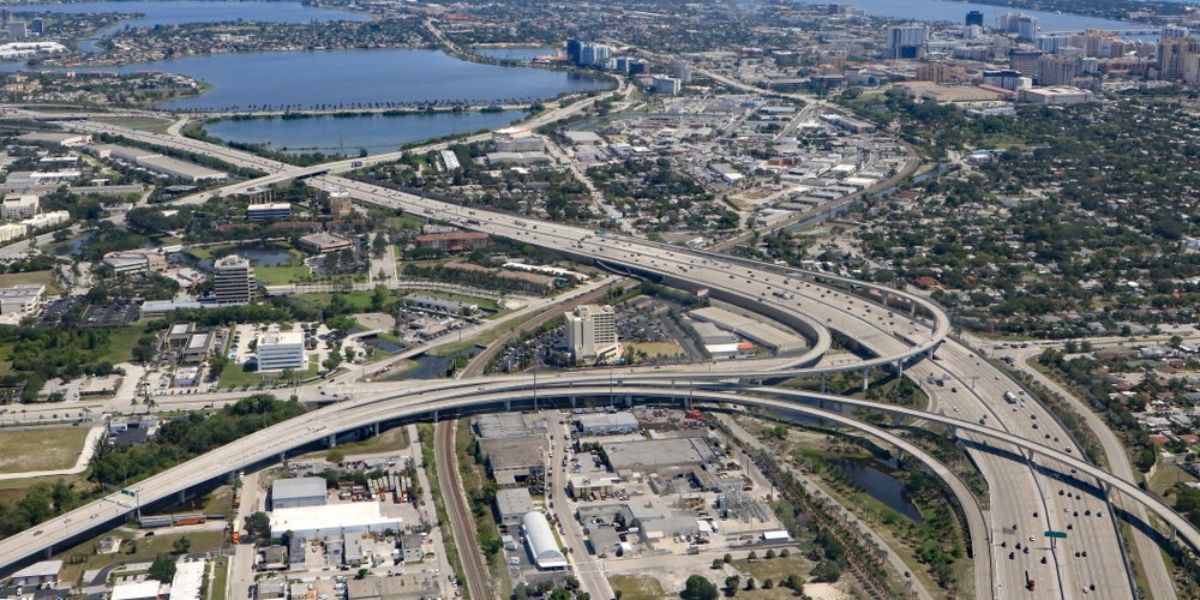Interstate 95, the major highway that stretches along the East Coast of the United States, has long been a critical route for both locals and travelers alike. However, recent reports have revealed a disturbing distinction: I-95 in Florida has earned the dubious title of the deadliest road in the entire country.
With its high volume of traffic, frequent accidents, and a growing number of fatalities, this highway has become a serious safety concern. But what exactly makes this stretch of road so dangerous, and what can be done to improve safety for those who use it?
The Danger Behind I-95: A Closer Look at Florida’s Deadliest Highway
Stretching from Miami to the Florida-Georgia border, I-95 runs through some of the most heavily populated areas of the state, including major cities like Miami, Fort Lauderdale, and Jacksonville. It’s a vital corridor, not only for commuters but also for commercial truckers, tourists, and seasonal travelers.
However, it’s also a road known for its high accident rate. According to the National Highway Traffic Safety Administration (NHTSA), Interstate 95 ranks as one of the deadliest roads in the nation, with Florida’s portion of I-95 leading the charge. The stretch between Miami and Jacksonville is particularly notorious for its congestion, heavy traffic, and frequent crashes.
Why Is I-95 So Dangerous?
Several factors contribute to the high number of accidents and fatalities on I-95 in Florida. The road’s complexity, combined with heavy traffic volume, creates an environment prone to crashes. Some of the key reasons behind the road’s deadly reputation include:
1. High Traffic Volume and Congestion
I-95 runs through Florida’s most populated areas, making it one of the busiest highways in the U.S. On any given day, thousands of vehicles travel along this route.

This high volume of traffic often leads to congestion, particularly during rush hours or tourist seasons, when people from all over the country drive through the state. When traffic is heavy, drivers are more likely to make errors, such as sudden lane changes, speeding, or tailgating, which can result in accidents.
2. Speeding and Reckless Driving
In Florida, speeding is a common issue on I-95. With long stretches of road, particularly in rural or less populated areas, drivers often feel the urge to accelerate. Speeding in high-traffic conditions can cause deadly collisions.
Additionally, aggressive driving behaviors, such as weaving in and out of lanes or tailgating, increase the likelihood of a crash. These reckless actions are especially dangerous on highways like I-95, which often have sharp curves, high-speed limits, and unpredictable traffic patterns.
3. Roadway Design and Construction
While I-95 is a crucial artery for Florida, it is also an aging roadway with numerous design flaws. Some parts of the highway have outdated infrastructure, including poorly maintained lanes, inadequate signage, and tight on-ramps and off-ramps.
These flaws can increase the likelihood of accidents, especially in inclement weather or during nighttime driving. In addition, ongoing construction and lane closures often result in sudden traffic slowdowns, creating dangerous situations for drivers who may not be paying full attention.
4. Weather Conditions
Florida’s weather can be both a blessing and a curse for drivers. While the Sunshine State is known for its beautiful, warm weather, it’s also susceptible to sudden and intense rainstorms, especially during the summer months. The wet conditions often lead to reduced visibility, slippery roads, and an increased risk of hydroplaning. Drivers unfamiliar with driving in heavy rain or storms may panic and make poor decisions, such as slamming on the brakes or swerving, which only exacerbates the danger.
5. Distracted Driving
Like many other highways across the country, distracted driving remains a major issue on I-95. Drivers texting, talking on their phones, or even fiddling with in-car technology take their focus away from the road, making them less likely to react to sudden hazards. In high-speed areas of I-95, even a brief moment of inattention can lead to a catastrophic accident.
The Consequences: Fatalities and Serious Injuries
The statistics surrounding accidents on I-95 in Florida are alarming. The highway has consistently been at the top of the list for the most fatalities. In 2020 alone, I-95 was involved in hundreds of fatal crashes across the state. These accidents often result in life-changing injuries for survivors, including spinal cord injuries, traumatic brain injuries, and amputations. For families who lose loved ones on this deadly stretch of road, the consequences are devastating and long-lasting.
The most common types of accidents on I-95 are rear-end collisions, side-impact crashes, and rollovers, all of which often occur at high speeds. These accidents not only cause significant damage to vehicles but can also lead to fatalities or serious injuries, particularly when seatbelts are not worn or when drivers are under the influence of alcohol or drugs.
What’s Being Done to Improve Safety?
Recognizing the dangers on I-95, both state and federal authorities have taken steps to improve road safety. These efforts include:
1. Roadway Improvements and Upgrades
State and local officials have worked to make improvements to I-95’s infrastructure, including widening lanes, repairing road surfaces, and updating signs. Efforts to reduce congestion, such as adding toll lanes, are also being explored to help keep traffic moving smoothly.
2. Enhanced Law Enforcement
Local law enforcement agencies have increased their presence on I-95, particularly during high-traffic periods. This includes targeted patrols focusing on distracted driving, speeding, and other dangerous behaviors. Increased fines and penalties for offenses like tailgating and running red lights are also being considered as deterrents.
3. Driver Education
State-funded programs aimed at educating drivers about road safety and defensive driving tactics are helping raise awareness of the dangers on I-95. Public safety campaigns emphasize the importance of seatbelt use, obeying speed limits, and staying focused on the road.
Final Thoughts
I-95 in Florida has earned its place as the deadliest road in the U.S. for a number of reasons, including high traffic volume, poor weather conditions, and hazardous driving behavior. As more people continue to use this major highway for travel, work, and recreation, it’s crucial that drivers remain vigilant and adhere to safe driving practices. With continued improvements to the road and greater public awareness of the risks involved, it is possible to reduce fatalities and make I-95 safer for everyone who relies on it.







